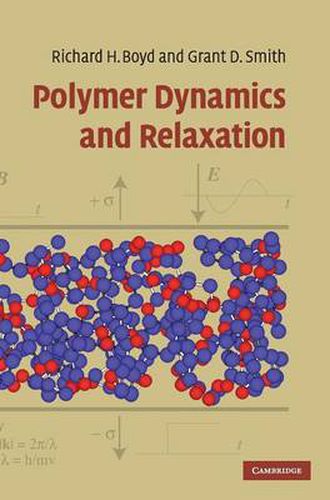Readings Newsletter
Become a Readings Member to make your shopping experience even easier.
Sign in or sign up for free!
You’re not far away from qualifying for FREE standard shipping within Australia
You’ve qualified for FREE standard shipping within Australia
The cart is loading…






Polymers exhibit a range of physical characteristics, from rubber-like elasticity to the glassy state. These particular properties are controlled at the molecular level by the mobility of the structural constituents. Remarkable changes in mobility can be witnessed with temperature, over narrow, well defined regions, termed relaxation processes. This is an important, unique phenomenon controlling polymer transition behaviour and is described here at an introductory level. The important types of relaxation processes from amorphous to crystalline polymers and polymeric miscible blends are covered, in conjunction with the broad spectrum of experimental methods used to study them. In-depth discussion of molecular level interpretation, including atomistic level computer simulations and applications to molecular mechanism elucidation, are discussed. The result is a self-contained approach to polymeric interpretation suitable for researchers in materials science, physics and chemistry interested in the relaxation processes of polymeric systems.
$9.00 standard shipping within Australia
FREE standard shipping within Australia for orders over $100.00
Express & International shipping calculated at checkout
Polymers exhibit a range of physical characteristics, from rubber-like elasticity to the glassy state. These particular properties are controlled at the molecular level by the mobility of the structural constituents. Remarkable changes in mobility can be witnessed with temperature, over narrow, well defined regions, termed relaxation processes. This is an important, unique phenomenon controlling polymer transition behaviour and is described here at an introductory level. The important types of relaxation processes from amorphous to crystalline polymers and polymeric miscible blends are covered, in conjunction with the broad spectrum of experimental methods used to study them. In-depth discussion of molecular level interpretation, including atomistic level computer simulations and applications to molecular mechanism elucidation, are discussed. The result is a self-contained approach to polymeric interpretation suitable for researchers in materials science, physics and chemistry interested in the relaxation processes of polymeric systems.